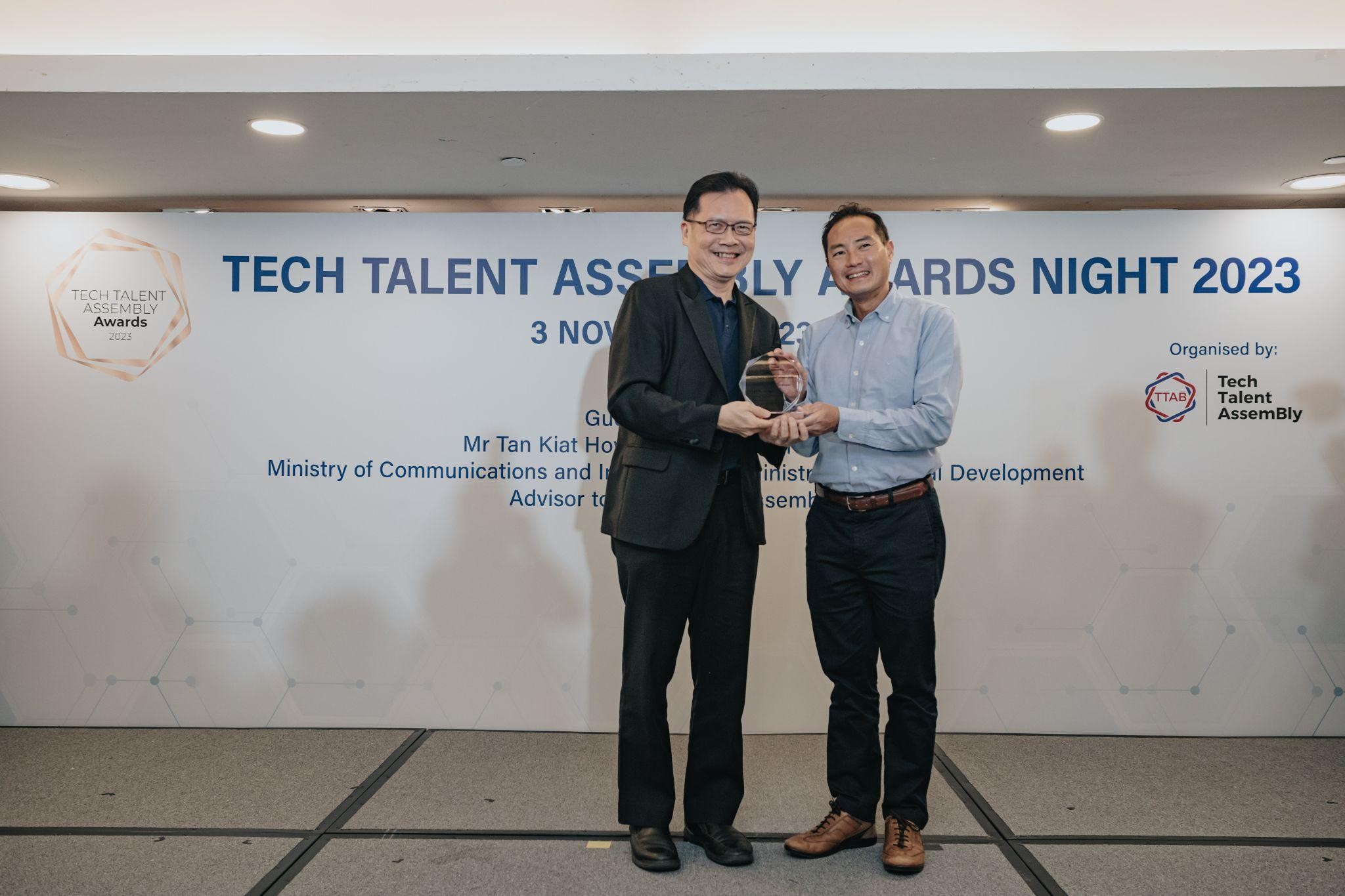ChatGPT Whisperers: Is Prompt Engineering Becoming A Legitimate Career?
Imagine getting paid to chat with an AI robot. That may be the first thing that comes to mind when talking about prompt engineering as a career.Imagine getting paid to chat with an AI robot.
That may be the first thing that comes to mind when talking about prompt engineering as a career. Turns out, economists weren’t kidding when they said our jobs would be transformed by the AI wave. The National University of Singapore recently made headlines for a prompt engineer job listing that offered S$8,000 per month. International market census shows that annual compensation packages for prompt engineers can climb up to as high as a staggering S$445,000. It’s like we’re witnessing the talent competition for software engineers all over again.
But as with any job, there are considerations to take into account before leaping headfirst into a role that may not even be suitable for you. What exactly does a prompt engineer do, and how does one become good at the art of prompt engineering? Can one truly make a career out of typing prompts into ChatGPT, or are there other competencies that one can pick up as a prompt engineer that can be transferred to alternative career paths in case this turns out to be yet another tech fad?
Will demand for prompt engineers continue to increase?
AI’s global development is almost a given at this point, but individuals who are looking to transition into more tech-based roles will be delighted to note that Singapore is expected to stay ahead of its competitors in the global AI race. In the 2nd edition of the Salesforce Asia Pacific AI Readiness Index Study, Singapore was assessed to be more AI ready on the governmental, business, and consumer fronts compared to its APAC peers, including the likes of Japan, Hong Kong, and Vietnam. Industries highlighted to be poised for AI adoption here include financial services, healthcare, tourism, transport, and logistics.
With the local AI market projected to reach US$16 billion by 2030, employers and employees alike can expect prompt engineering to gain greater prominence with time — if not as full-fledged careers, then at least as a periphery skill that will allow professionals to enhance their productivity and creativity at work. Think sales and operations managers who know exactly what to type into ChatGPT to streamline or even automate day-to-day tasks. Such hybrid roles will no doubt allow a much wider pool of people with smaller risk appetites to keep up with rapidly developing technology without requiring them to jump headfirst into an unexplored career path.
In addition, economists are also advising Singapore to increase its participation in the setting of international AI standards and strengthen AI provisions in digital economy agreements.
Given the astronomical level of resources being poured into AI development at the moment, one can almost say for certain that demand for prompt engineering will continue to increase in the immediate future as governments and organisations worldwide explore the limits of what AI can and cannot do for them. Moreover, given the intensified focus on the legal and ethical implications of AI, there will be a growing demand for professionals knowledgeable in diverse fields such as copyright law and ethical business practices to closely monitor AI outputs and ensure legal compliance and public acceptance.
These concerns, coupled with the expectation that AI will be able to produce outputs of greater quality over time, the long-term prospects of a prompt engineering degree is naturally being called into question from the get-go. After all, as much as Googling has become integral to so many of our jobs for over two decades, you’ll be hard pressed to find anyone who is paid to sit at their desk to come up with search phrases that pull out the best results.
How does one qualify to become a prompt engineer?
But unlike Googling, which can be understood as a hyper-efficient way to flip through an intensive content catalogue, prompt engineering goes one step further to mash the contents of what’s already out there to produce copy, illustrations, videos, and sound bites that may have only existed in the prompters’ imagination up until that point.
Being able to execute prompts that produce outputs that are not only usable, but fit business, project, and/or client requirements to a T is a completely different matter altogether. After all, the machine is not capable of reading people’s minds. All it can do is work on inputs that are as strong as the user’s ability to describe things coherently, and within context.
That’s why strong linguistic skills, including multilingualism,is being prioritised over coding ability or technical background by companies looking to hire prompt engineers. Of course, technical knowledge will still give you an upper hand.Competencies requested for in job descriptions thus far include web application development as well as the ability to use open-source models and APIs. But the requirement that always floats to the top is often the willingness to learn about the tech behind and industry around Large Language Models.
How valuable is prompt engineering as a skill?
To gain perspective on just how difficult it is to generate quality prompts, consider the fact that marketplaces such as Promptbase exist. These places are where prompt engineers exchange prompts that they’ve crafted for specific AI tools for cold hard cash.
How is prompt engineering conducted?
Before we talk about the skill that goes into prompting, let’s first understand how quality prompting works. According to the growing online community of prompt engineers, prompts generally consist of four core elements:
- Instructions: In this section, users provide guidance to the Large Language Model to specify their desired output. Detailed parameters such as sample quantity, image dimensions, tone, style, and other relevant factors can be provided to refine the generated content.
- Questions: While ChatGPT has faced criticism for generating inaccurate information, GPT-4 has demonstrated competence in producing reliable answers. It is advisable to verify responses using credible sources. If there is a clear expectation of what an answer should entail and a prompt confirmation is sought, inputting the query into Large Language Models can offer a convenient and efficient means of obtaining information.
- Input Data: On occasions, the inclusion of background information becomes necessary for Large Language Models to generate more refined outputs. For instance, when developing a website, sharing information about the business model and desired goals of the website, rather than simply listing desired features, can lead to improved results.
- Examples: Describing requirements in words can be challenging at times. Providing examples can prove useful in such cases. For instance, in the role of a social media manager seeking creative ideas, presenting a list of previously published posts and exploring the suggestions offered by ChatGPT can be beneficial.
By playing around with these four elements and combining them with more advanced techniques, prompt engineers essentially act as AI whispers who bridge the gap between human expectations and AI responses. In other words, because the value that companies obtain from AI rests significantly on the quality of prompts, professionals who are capable of communicating with AI will no doubt become significantly more valuable in a world that revolves around such technology.
How will prompt engineering evolve over time?
Prompts that generate the most optimal outputs will likely evolve as generative AI itself continues to advance. We’re already beginning to see generative AI models that are designed for specific industries beginning to surface. Some examples include chatbots with domain knowledge that is specific to a website, or generative AI plugins that can be used to streamline tasks such as creating excel sheets and powerpoint slides.
These AI models have their own architecture, training data, and are pre-programmed to accept inputs and generate outputs in specific ways. This also means that various AI models will have strengths, weaknesses, and limitations that are significantly different from what we’ve experienced thus far with ChatGPT. Specialised prompt engineers can therefore build up experience through interacting with such models over time, combining their field knowledge to continually refine prompts and eventually discover use cases that may not even have been considered before.
How will the prompt engineering profession influence my career?
Investment bank Goldman Sachs has made the bold prediction of AI replacing 300 million full-time jobs worth in labour. But with tech layoffs happening left and right, we don’t really need experts to tell us that our jobs aren’t as safe as they used to be. Just as the development of sewing machines and conveyor belts reduced demand for physical labour, prompt engineering could significantly devalue common white-collar skills such as writing, translation, graphic design, video editing, and more.
Does this mean that people in such professions are doomed? Not necessarily, since people in these professions are far more likely to possess the technical vocabulary required to write specific prompts. What is certain, however, is that these skills alongside many others will become far more accessible than they’ve ever been. Anyone who hopes to continue working in a profession that can be replicated by AI will therefore face steep competition in terms of output, quality, and cost.
For businesses, this could mean having to revamp their models. Devaluation of services points in the direction of working with fewer people and potentially taking on a larger client base, although the flipside of the coin says that digital service-based businesses could very well leverage AI with their expertise and experience to produce uniquely quality content on a larger scale.
There’s also the conundrum of whether AI will continue to be publicly available. The likes of ChatGPT and Bard only scratch the surface of AI’s potential. Everyone’s still figuring out the best way to extract the most value out of generative AI at the moment. But we might soon see frontrunners pulling away when companies start refining their own AI models and train prompt engineers specifically to interact with them.
Be the first to the latest tech developments
Prompt engineering is just one of many tech domains that will continue to develop at exponential rates as technology continues to breach new grounds. To stay on top of what’s coming next, be sure to follow TTAB on LinkedIn and Facebook for more insights from our technical experts.
Plus, don’t forget to join the TTAB Career Conversation for networking opportunities with industry professionals or drop us a message on Facebook to receive personalised tech career advice.



